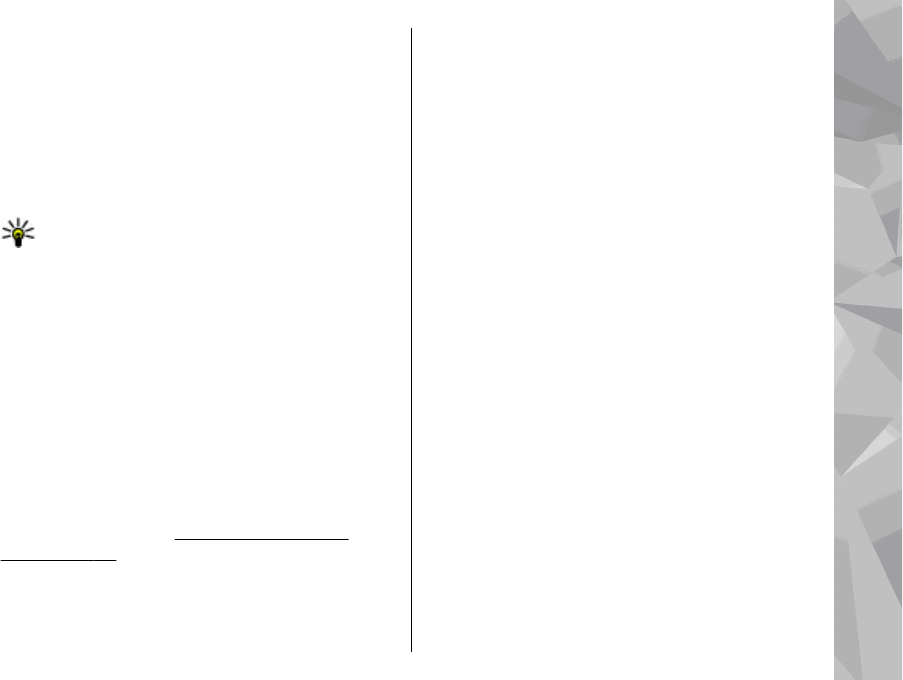
To set the self-timer delay, in the active toolbar, select
Self timer > 2 seconds, 10 seconds, or 20 seconds.
To activate the self-timer, select Activate. The device
beeps when the timer is running and the quadrangle
blinks just before the image capture. The camera takes
the picture after the selected delay elapses.
To switch off the self-timer, in the active toolbar, select
Self timer > Off.
Tip: In the active toolbar, select Self timer > 2
seconds to keep your hand steady when taking
a picture.
Tips on taking good photographs
Picture quality
Use the appropriate picture quality. The camera has
several picture quality modes. Use the highest setting
to make sure that the camera produces the best picture
quality available. Note however, that better picture
quality requires more storage space. For multimedia
message (MMS) and e-mail attachments it may be
necessary to use the smallest picture quality mode
optimised for MMS sending. You can define the quality
in the camera settings.
See "Still image camera
settings", p. 69.
Background
Use a simple background. For portraits and other
pictures with people, avoid having your subject in front
of a cluttered, complex background that may distract
attention from the subject. Move the camera, or the
subject, when these conditions cannot be met. Move
the camera closer to the object to take clearer portraits.
Depth
When shooting landscapes and sceneries, add depth to
your pictures by placing objects in the foreground. If
the foreground object is too close to the camera, it may
be blurred.
Lighting conditions
Changing the source, amount, and direction of light
can change photographs dramatically. Here are some
typical lighting conditions:
● Light source behind the subject. Avoid placing your
subject in front of a strong light source. If the light
source is behind the subject or visible in the display,
the resulting picture may have weak contrast, may
be too dark, and may contain unwanted light
effects.
● Sidelit subject. Strong side light gives a dramatic
effect but may be too harsh, resulting in too much
contrast.
● Light source in front of the subject. Harsh sunlight
may cause the subjects to squint their eyes. The
contrast may also be too high.
● Optimal lighting is found in situations where there
is plenty of diffused, soft light available, for
67
Camera


















